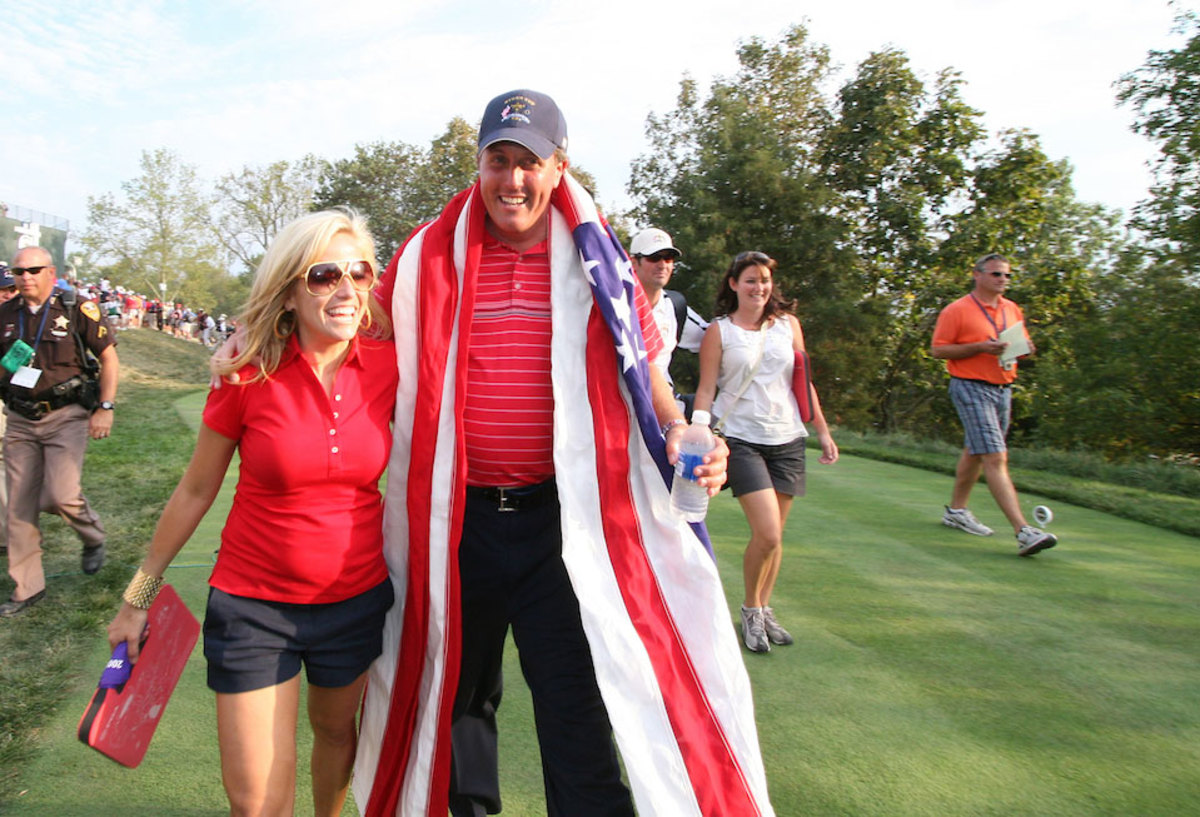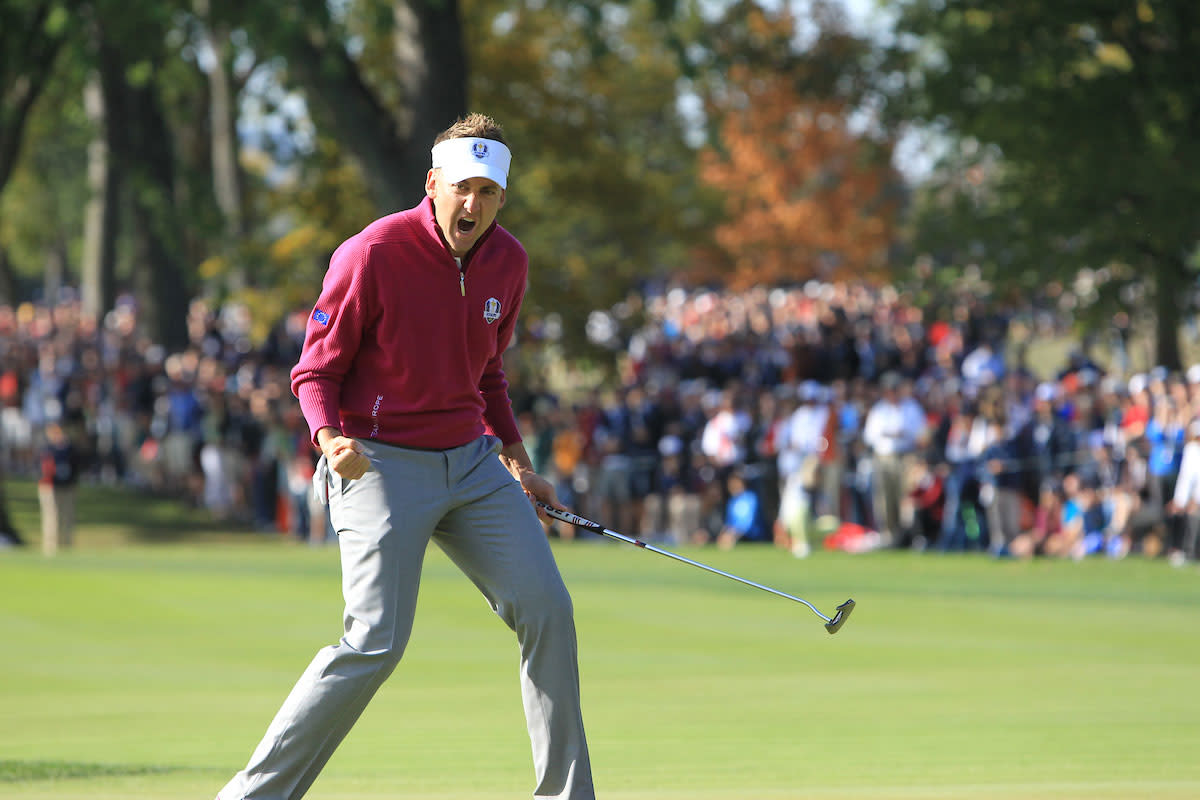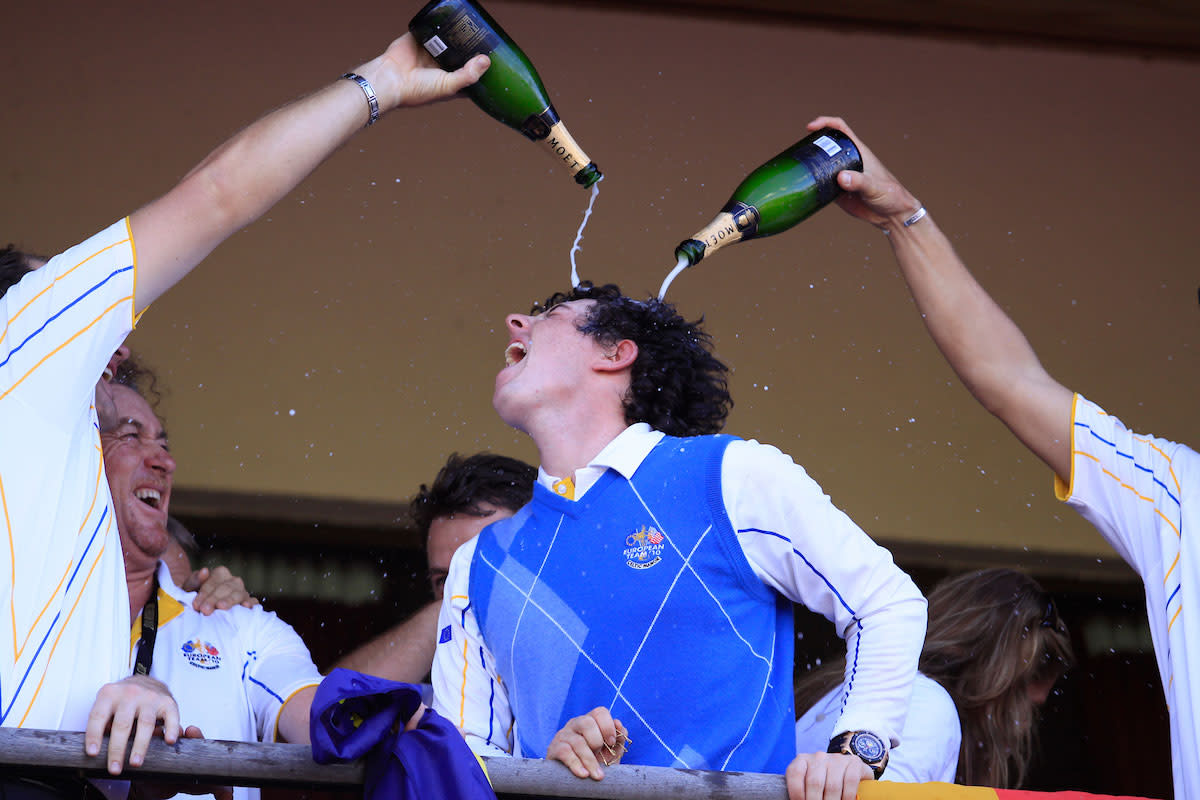11 Reasons the Ryder Cup is the Most Compelling Event in Golf

Nobody ever paid much attention to the Ryder Cup until it actually became competitive, which only took 50 years and required a geographic expansion no less fitting than John Daly’s waistline. Once the old Great Britain & Ireland franchise was broadened to include all of Europe in 1979, everything changed. Not right away, but not at a woebegone pace, either.
This revolution was led by Seve Ballesteros, of course, the dashing Spaniard who made birdies from the car park and enemies with just about everyone wearing a different-colored shirt. After beating the Americans three times in the first 25 editions of the biennial series, the Euros claimed their first victory on U.S. soil in 1985. To think that Uncle Sam would win five Ryder Cups over the next 36 years is to wander along the border of delusion and impossibility.
It doesn’t make sense, but it does make people a lot more interested.
The Europe-vs.-USA, match-play buffet has become pro golf’s most beguiling and compelling event, a source of endless food for thought among the game’s primary fan base, many of whom wonder how something so easy to love can be so hard to explain. From the vastly overrated role of the team captains to the sundry elements of pomp and pageantry, from its unique, three-day format to the sheer splendor of watching 24 of the world’s best golfers playing only for a flag, the hypocrisy and democracy of it all make for wondrously odd bedfellows.
With a tip of the cap to Ballesteros, who was often the last man standing before leaving this world far too soon, here are 11 reasons why the Ryder Cup is the greatest thing since green eggs and ham.
1. The waiting is the hardest part. That two-year interval between meetings — three years this time around, thanks to COVID-19 — deftly serves as a catalyst of heightened anticipation. The matches themselves only take about 55 hours to contest, but the pregame festivities, which include the election of a captain, the drive for qualifying spots and the at-large picks, carry on for months and play a key role in building the brand.
When play finally does start, it’s like popping the top on a shaken bottle of champagne. A Giants-Eagles game with NFL playoff implications couldn’t come close to matching the on-site fervor at a Ryder Cup.

2. Territorial tenacity. With that comparison in mind, golf tournaments in general are devoid of any civic allegiance to a particular player, as opposed to mainstream sports, where a vast majority of a city’s population has a rooting interest in their local team. Everybody in Pittsburgh loves the Steelers. Very few folks in Orlando, however, give a damn whether Dustin Johnson wins or loses. There are a few exceptions, notably in the case of Tiger Woods, where every tournament start was a home game, but that was due to his immense popularity. There was no native link.
At a Ryder Cup, partisanship is very cut and dried. You’re either a Hatfield or a McCoy. That’s why it gets crazy. That’s when it gets fun.
3. The Peter Baker factor. At the 1993 matches, Baker, an obscure Englishman, came from 15 miles south of Nowhere to win three of his four matches, including a stunning singles triumph over Corey Pavin. Every Ryder Cup seems to produce an unlikely hero or two; Tommy Fleetwood and Francesco Molinari wore the halos when Europe crushed the U.S. in France three years ago. On the same weekend Baker claimed his 15 minutes of fame, overlooked Chip Beck emerged as America’s MVP. Drama only deepens when it comes courtesy of an anonymous source.
4. All that handwringing. We search for reasons as to why so many superior U.S. teams have been clobbered by the Europeans. For God’s sake, the PGA of America appointed a task force to examine the predicament after the debacle in 2014. Here’s an idea fellas: make more 15-footers. Hole a few putts that mean something. Strap on some guts down the stretch and quit throwing up on the 18th hole. That will solve the problem. Guaranteed. Right? People in high places keep searching for answers, as if to make their concern more overt, which is silly, but silly ain’t a felony. It makes for good copy.
5. What do you mean, no paycheck? The fact that the Ryder Cup offers no prize money reached a boiling point in 1999, when several American golfers strongly suggested that they get compensated for their three days of hard labor. It’s not nearly the issue it was 20-some years ago, mainly because today’s tour pros make a hundred grand just to finish T-21. They have more money than they know what to do with. The absence of a purse is probably the biggest reason the Ryder Cup is so special. You represent your country. You do everything you can to help the team. Perhaps most of all, you play because you love the game.
6. Friction + Controversy = Good Stuff. Again, the bad blood is more a thing of the past, but you never know when some trite little spat will turn into a juicy news item. Three years ago, it was Johnson and Brooks Koepka in a post-loss dustup of unspecified origin or intensity. Seve and Paul Azinger rolled around in the dirt at least a couple of times. Thin skin and thick blood lead to a lot of open wounds. The most profuse bleeding in recent years occurred when Phil Mickelson basically trashed U.S. skipper Tom Watson at the Sunday evening news conference, a squabble that goes way back. Inquiring minds want to know. Everybody stares at the ambulance as it roars down the street.
☑️ First Tee Ready
— Ryder Cup USA (@RyderCupUSA) September 8, 2021
☑️ U.S. Team Set
✅ 12 Days To Go#WhistlingWednesday pic.twitter.com/bRx3yigMHS
7. Oh, the pressure! You could search for decades to find a Ryder Cup participant who didn’t think he was going to barf his brains out on the first tee Friday morning. It is a mental burden unlike any other a tour pro will ever face, because playing for 11 other guys is 11 times harder than playing for yourself. Because the crowd gathered around that tee box has been waiting two years. Because you’re among the best of the best, and if an overdose of nerves causes you to top your opening drive or slice it into the pretzel stand, you will never live down the moment. And by the way, that tension lasts about 55 hours.
8. The astonishing reversal of long-term fortune. It’s fair to wonder if the Ryder Cup would be half the spectacle it is today if the U.S. had kept trampling Europe on a regular basis. The success of the event owes everything to the emergence of Ballesteros and his fully inspired cohorts as a worthy opponent. Their passionate pursuit of respectability not only made this a legitimate rivalry, it remains the intangible most responsible for their flipping the script and slapping around uncle Sam the same way Uncle Sam once slapped around them. The Euros are still the underdog heading into almost every Ryder Cup, which only adds a bit of Rocky-like zest to the affair.
9. When strategy invites tragedy. No golf tournament on earth comes close to matching the abundance of second-guessing emitted from a Ryder Cup. When U.S. skipper Davis Love III benched Mickelson and Keegan Bradley after their torrid start in 2016, America’s oral majority thought Love had lost his marbles. When Hal Sutton decided to pair Woods and Mickelson for both Friday sessions in 2004, the naysayers wasted no time launching haymakers at the stupidity of such a superhero partnership. Watson was battered by the critical masses for his inept handling of the 2014 underachievers.
Lanny Wadkins got roasted for spending a captain’s pick on over-the-hill Curtis Strange in 1995. The list goes on and on, most of it spawned by decisions on this side of the Atlantic. If such public discourse is negative by rule, it’s also a vital component to the popularity of sports in general. If nobody says anything, does anybody care?

10. David vs. Goliath, without a script. For all the unrest over Team America’s listless performances in the last two decades, need it be said that the Europeans have played brilliantly, like a squad on a mission? Actually, it does deserve further mention. Ian Poulter never wears a cape at a PGA Tour stroke event, but every other September, he bounces out of a phone booth in blue spandex, practically salivating over the opportunity to execute more victims. The same goes for Sergio Garcia, who becomes the Sergio everyone originally thought he’d be when he’s armed with a partner in the team dimension.
It’s not that the Americans don’t care, not even close. It’s that the Europeans have more to prove, less to lose, and dare it be said, more incentive to slay the big, bad Yanks than the motivational factor that comes with U.S. players trying to topple what is largely considered an inferior foe. It’s a storyline that never grows old. Little guy conquers. Heart and soul prevail. It’s a sexy hook, but it is getting a bit repetitive.

11. The pure essence. There’s something awfully cool about watching a bunch of rich guys in ugly outfits bonding like brothers in an environment overflowing with energy. It’s just a game — an exhibition, no less — but it means a lot to every competitor and those who favor a dignified blend of intensity and suspense. If the Ryder Cup were played every year, it wouldn’t matter half as much. If the players were paid for their services, it probably wouldn’t mean anything.
When you see a bunch of grown men getting so worked up about something that just went down, you know you’re watching something good. Something real good.
